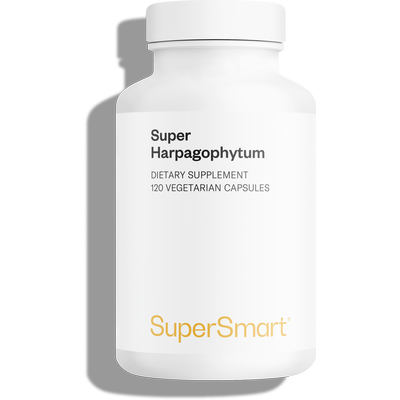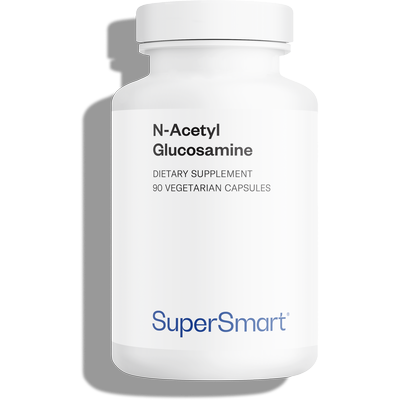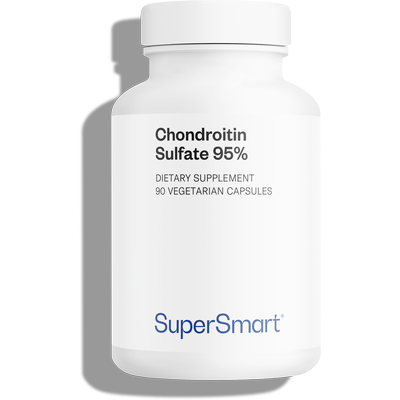10-10-2018
Five common misconceptions about arthritis
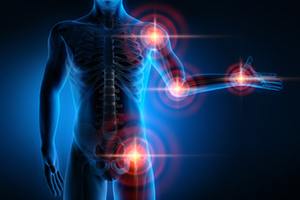 The statistics are alarming: if you live in an affluent country, your lifetime risk of suffering from arthritis of the hip or knee may be as high as 25% and 45% respectively1 2. And despite these very high figures, prevention and treatment of arthritis are hampered by the many false assertions circulating about the disease.
The statistics are alarming: if you live in an affluent country, your lifetime risk of suffering from arthritis of the hip or knee may be as high as 25% and 45% respectively1 2. And despite these very high figures, prevention and treatment of arthritis are hampered by the many false assertions circulating about the disease. Arthritis is the result of normal, age-related wear and tear
Arthritis is a normal, inevitable consequence of ageing, right? Actually no. While many young people might believe this to be the case, they’re wrong. Arthritis is in fact a chronic disease associated with abnormal degeneration of cartilage. Like most other degenerative diseases (diabetes, amyotrophic lateral sclerosis (ALS) – also known as Lou Gehrig's disease, and Alzheimer’s disease), it is, to a certain degree, linked to oxidative stress – the imbalance between levels of reactive by-products of oxygen (commonly referred to as ‘free radicals’) and the body’s ability to protect itself from them. In the case of arthritis, most of these by-products are generated by chondrocytes (the cells that make up cartilage) and are directly involved in the degeneration of cartilage and synovial fluid3,4. Yet this pathological mechanism has nothing to do with normal ageing. It is the complex result of a combination of factors, some of which are avoidable: repetitive strain injuries and movements, added stress to joints due to excess weight, or a lack of physical activity5,6.
One thing’s for sure: believing that arthritis is the inevitable result of ageing leads to fatalism and is not conducive to taking preventive measures!
Arthritis is passed from one generation to the next
While it’s true that arthritis does have a genetic element, genes are actually a relatively moderate factor in determining our individual risk, compared with other ‘hereditary’ diseases. Heritability is estimated to account for between 40% and 65% of arthritis cases7, as against 60%-80% for Alzheimer’s disease8. By way of comparison, heritability of lung cancer, which we know is primarily caused by smoking, is only 8% 9. And some forms of arthritis are more ‘hereditary’ than others: 70% in the case of arthritis of the back, 65% for arthritis of the hands and 60% for arthritis of the hip, as against 40% in the case of knee arthritis, making it the most ‘avoidable’ form10.
In all cases, having a parent who has suffered from arthritis does not mean you in turn will be affected, but it does make you at more at-risk. Having genetic abnormalities (particularly related to collagen composition) increases your risk of developing the disease and you should therefore be especially mindful of lifestyle factors (excess weight, physical activity, diet and stress) in order to reduce your likelihood of developing the disease.
X-rays are an effective way of diagnosing arthritis
For 90% of people affected by arthritis, the first symptom is generally minor and unusual pain - when bending down, climbing stairs, stretching or handling objects11. But it’s only three years later, at the age of 50 on average, that they realise they’re suffering from arthritis.
This delay is partly due to the inability of X-rays to detect the early stages of the disease: by the time there is actual evidence, the arthritis is already at an advanced stage. Bone abnormalities typical of arthritis (osteophytes, deformities, pinching) are apparent, but damage to cartilage, ligaments and synovial fluid is often missed.
Studies12,13 have shown that X-rays are not a reliable way of diagnosing arthritis and can prevent early treatment of the disease. Unfortunately, MRI and blood tests are equally unable to provide a definitive diagnosis. Pain remains the best indication of early-stage arthritis and we should not wait till it becomes chronic before taking action and seeking advice.
We should protect our joints by abstaining from exercise
Who would risk aggravating joint pain by engaging in physical exercise? Unfortunately, all too many arthritis-sufferers.
Contrary to what you might think, exercise can actually be as effective for arthritis as pain-killing drugs14, and it produces fewer side-effects. By reducing inflammation, improving joint function and preventing potential problems from excess weight, it represents an effective way of relieving the pain of arthritis. The main problem is actually getting on with it: believing themselves to be too old, too many people lack the confidence to go ahead and start exercising. Yet, apart from activities that require sudden directional changes, arthritis is improved by almost all types of exercise – water-based15, cycling16, aerobic17, strengthening18, 19, as well as high or low impact exercises20, 21.
The most important thing is to keep exercising, because the more you come to enjoy your chosen activity, the more your pain will decrease22.
There’s nothing you can do to relieve arthritis
Arthritis has a reputation for being a complaint that you just have to put up with. However, even though there are no 100% cures, there are a number of ways of relieving it. The mere act of ‘not giving up’, carrying on with everyday activities in spite of the pain, and maintaining a positive attitude, all contribute to effective management of the disease23.
In addition to physical activity, other forms of treatment include numerous alternatives to the pain-relief drugs which are increasingly viewed as of limited efficacy and potentially risky. Key among these alternatives are the following plant-based therapies and other scientifically-supported treatments:
-
• Arnica gel, a topical application effective at relieving pain and improving mobility24.
• Cayenne extract (Capsicum frutescens) which, with its high capsaicin content, is internationally recommended for relieving arthritis of the knee25.
• Boswellia serrata extract, currently one of the most popular natural health products26 (available from Supersmart as Super Boswellia).
• Devil’s claw extract (Harpagophytum procumbens), with demonstrated efficacy for reducing inflammation and improving joint mobility25 (available from Supersmart as Super Harpagophytum).
• Glucosamine, which is produced naturally by the body and which relieves pain while slowing the development of arthritis27, 28 (available from Supersmart as NAG 500 mg).
• Chondroitin, a key component of cartilage which also eases pain and stems progress of the disease (unlike NSAIDs which tend to accelerate it) 29-1, available from Supersmart as Chondroitin Sulfate 95% .
The truth is that there is no shortage of effective pain relief treatments for arthritis. It’s more a question of ‘making the leap’ and trying them, and accepting that some approaches will suit you better than others. Which have you tried already?
> Sources :
1. Murphy LB, Helmick CG, Schwartz TA, Renner JB, Tudor G, Koch GG, et al. One in four people may develop symptomatic hip osteoarthritis in his or her lifetime. Osteoarthritis
2. Cartilage 2010;18:1372-9.3 Murphy L, Schwartz TA, Helmick CG, Renner JB, Tudor G, Koch G, et al. Lifetime risk ofsymptomatic knee osteoarthritis. Arthritis Rheum 2008;59:1207-13
3. Rathakrishnan C., Tiku K. et al. Release of oxygen radicals by articular chondrocytes: A study of luminol-dependent chemoluminescence and hydrogen peroxide secretion. J. Bone Miner. Res. 1992;7:1139–48.
4. Henrotin Y. Deby-Dupont G., et al. Production of active oxygen species by isolated human chondrocytes. Br. J. Rheumatol. 1993;32:562–7.
5. Alcaraz MJ, Megias J et al. New molecular targets for the treatment of osteoarthritis.Biochem Pharmacol. 2010;80:13–21.
6. Henrotin Y, Kurz B, Aigner T. Oxygen and reactive oxygen species in cartilage degradation: friends or foes? Osteoarthritis Cartilage. 2005;13:643–54.
7. Cristina Rodriguez-Fontenla & al. Genetics of Osteoarthritis. Reumatol Clin.2015;11:33-40
8. Gatz M et al. Role of genes and environments for explaining Alzheimer disease. Archives of General Psychiatry. 2006; 63:168-74.
9. Braun MM et al, A cohort study of twins and cancer ? Cancer Epidemiol Biomarkers Prev July 1995 4; 469
10. T.D. Spector,A.J & MacGregor, Risk factors for osteoarthritis: genetics, Osteoarthritis Cartilage. 2004; 12:39-44
11. Hensor EM, Dube B, Kingsbury SR, Tennant A, Conaghan PG, Toward a Clinical Definition of Early Osteoarthritis: Onset of Patient-Reported Knee Pain Begins on Stairs. Data from the Osteoarthritis Initiative. Arthritis Care Res (Hoboken). 2015;67:40-47
12. Chan Kim & al. Association of hip pain with radiographic evidence of hip osteoarthritis: diagnostic test study. BMJ, 2015; h5983.
13. Kinds MB, Marijnissen AC, Vincken KL, Viergever MA, Drossaers-Bakker KW, Bijlsma JW, et al. Evaluation of separate quantitative radiographic features adds to the prediction of incident radiographic osteoarthritis in individuals with recent onset of knee pain: 5-year follow-up in the CHECK cohort. Osteoarthritis Cartilage 2012;20:548–56.
14. Lee YC, Nassikas NJ, Clauw DJ. The role of the central nervous system in the generation and maintenance of chronic pain in rheumatoid arthritis, osteoarthritis and fibromyalgia. Arthritis Res Ther. 2011;13:211.
15. Roper JA, Bressel E, Tillman MD. Acute aquatic treadmill exercise improves gait and pain in people with knee osteoarthritis. Arch Phys Med Rehabil. 2012;94(3):419–25. [PubMed]
16. Salacinski AJ, Krohn K, Lewis SF, Holland ML, Ireland K, Marchetti G. The effects of group cycling on gait and pain-related disability in individuals with mild-to-moderate knee osteoarthritis: a randomized controlled trial. J Orthop Sports Phys Ther. 2012;42:985–95. [PubMed]
17. Brosseau L, Wells GA, Kenny GP, Reid R, Maetzel A, Tugwell P. et al. The implementation of a community-based aerobic walking program for mild to moderate knee osteoarthritis: a knowledge translation randomized controlled trial: part II: clinical outcomes. BMC Public Health. 2012;12:1073. [BMC]
18. Wang SY, Olson-Kellogg B, Shamliyan TA, Choi JY, Ramakrishnan R, Kane RL. Physical therapy interventions for knee pain secondary to osteoarthritis: a systematic review. Ann Intern Med. 2012;157:632–44. [PubMed]
19. McKnight PE, Kasle S, Going S, Villanueva I, Cornett M, Farr J. et al. A comparison of strength training, self-management, and the combination for early osteoarthritis of the knee. Arthritis Care Res (Hoboken) 2010;62:45–53. [PubMed]
20. Sayers SP, Gibson K, Cook CR. Effect of high-speed power training on muscle performance, function, and pain in older adults with knee osteoarthritis: a pilot investigation. Arthritis Care Res (Hoboken) 2012;64:46–53. [PubMed]
21. Jan MH, Lin JJ, Liau JJ, Lin YF, Lin DH. Investigation of clinical effects of high- and low-resistance training for patients with knee osteoarthritis: a randomized controlled trial. Phys Ther. 2008;88:427–36. [PubMed]
22. Wang SY, Olson-Kellogg B, Shamliyan TA, Choi JY, Ramakrishnan R, Kane RL. Physical therapy interventions for knee pain secondary to osteoarthritis: a systematic review. Ann Intern Med. 2012;157:632–44
23. Creamer P, Hochberg MC. The relationship between psychosocial variables and pain reporting in osteoarthritis of the knee. Arthritis Care Res. 1998;11:60–5. review.
24. Knuesel O, Weber M et al. Arnica montana gel in osteoarthritis of the knee: an open, multicenter clinical trial. Adv Ther. 2002 Sep-Oct;19(5):209-18.
25. Cameron M, Chrubasik S. Topical herbal therapies for treating osteoarthritis. Cochrane Database Syst Rev. 2013 May 31;5:CD010538. Cameron M, Chrubasik S. Oral herbal therapies for treating osteoarthritis. Cochrane Database Syst Rev. 2014 May 22;5:CD002947.
26. Anthoni C, Laukoetter MG, et al. Mechanisms underlying the anti-inflammatory actions of boswellic acid derivatives in experimental colitis. Am J Physiol Gastrointest Liver Physiol. 2006 Jun;290(6):G1131-7.
27. Pavelka K, Gatterova J, et al. Glucosamine sulfate use and delay of progression of knee osteoarthritis: a 3-year, randomized, placebo-controlled, double-blind study.Arch Intern Med 2002 Oct 14;162(18):2113-23.
28. Glucosamine sulfate reduces osteoarthritis progression in postmenopausal women with knee osteoarthritis: evidence from two 3-year studies. Bruyere O, Pavelka K, et al. Menopause. 2004 Mar-Apr;11(2):138-43. Texte intégral : http://care.diabetesjournals.org
29. Reichenbach S, Sterchi R, et al. Meta-analysis: chondroitin for osteoarthritis of the knee or hip. Ann Intern Med. 2007 Apr 17;146(8):580-90.
30. Wandel S, Jüni P, et al. Effects of glucosamine, chondroitin, or placebo in patients with osteoarthritis of hip or knee: network meta-analysis. BMJ. 2010 Sep 16;341:c4675.
31. Glucosamine and chondroitin sulfate. Miller KL, Clegg DO. Rheum Dis Clin North Am. 2011 Feb;37(1):103-18. Review.
32. Hicks JE & Gerber LH (1992) Rehabilitation on the managementof patients with osteoarthritis. In: Moskowitz RW, Howell DS,Goldberg VM and Mankin HJ (eds) Osteoarthritis: Diagnosis and Medical/Surgical Management, pp 427-464.2nd edition.Philadelphia: WB Saunders.
33. Osiri M, Welch V, Brosseau L, Shea B, McGowan J, Tugwell P, et al. Transcutaneous electrical nerve stimulation for knee osteoarthritis. Cochrane Database Syst Rev 2000 ; (4):CD002823.
34. Ahern M, Nicholls E, Simionato E et al (1995) Clinical and psychological effects of hydrotherapy in rheumatic diseases 9: Clinic Rehabilitation 204-12.
35. Takeda W & Wessel J (1994) Acupuncture for the treatment of pain of osteoarthritic knees. Arthritis Care and Research 7: 119-22.
36. Garfinkel MS, Schumacher HR, Jr, Husain A, Levy M, Reshetar RA. Evaluation of a yoga based regimen for treatment of osteoarthritis of the hands. The Journal of Rheumatology.1994;21(12):2341–43.
37. Rouzi Shengelia & al. Complementary Therapies for Osteoarthritis: Are They Effective? Pain Manag Nurs. 2013 Dec; 14(4): 10.1016/j.pmn.2012.01.001.
Order the nutrients mentioned in this article
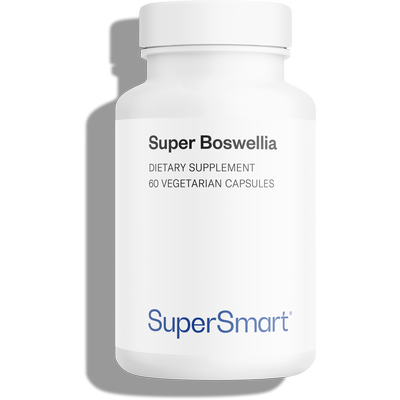
The essential painkiller for improving joint flexibility and comfort
www.supersmart.comFurther reading
10-10-2016
In India, turmeric is used to treat a wide variety of ailments including gastrointestinal problems, inflammation, headaches, infections and colds. It is turmeric’s curcuminoid content,...
Read more10-04-2019
In a review of published studies on S-adenosyl methionine (SAMe), the American Agency for Healthcare Research and Quality (AHRQ) concluded that SAMe was effective at...
Read more24-03-2015
S-adenosyl-methionine or SAMe is a natural compound found in every cell in the human body. It is involved in numerous biochemical processes, its main function...
Read more© 1997-2025 Fondation pour le Libre Choix
All rights reserved
All rights reserved
Free
Thank you for visiting our site. Before you go
REGISTER WITHClub SuperSmart
And take advantage
of exclusive benefits:
of exclusive benefits:
- Free: our weekly science-based newsletter "Nutranews"
- Special offers for club members only



